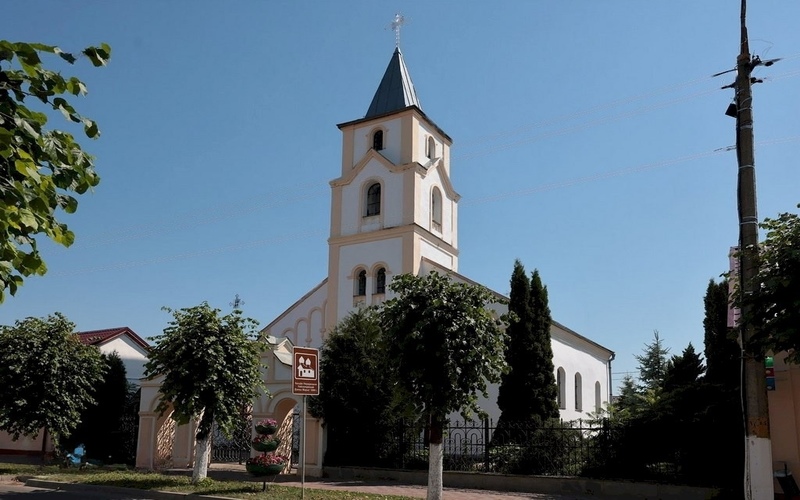- Vitebsk region, Verhnedvinsk District, Vyerkhnyadzvinsk, Sovetskaya street, 45
History
The first church in Drysa (the historical name for Vyerkhnyadzvinsk), built from wood in 1734, became too small after the town was designated an uyezd (a chief town of a district) in 1777. This led to the necessity of constructing a new, more spacious Catholic church.
In 1809, a new stone church was erected, which underwent several repairs and reconstructions over the years, including restoration after a fire in 1899.
However, in 1917, the church and the parish house were looted and partially destroyed, after which the buildings were used as shops. In the 1990s, the church was returned, it underwent extensive restoration, restoring to its former appearance.

About the Church
The Church of the Nativity of the Blessed Virgin Mary features a three-nave structure with a three-sided apse and a gable roof. The interior space is covered by a cylindrical vault on springing arches, and the naves are separated by an arcade on columns. Three altars, including the main one, are adorned with architectural details, including a Doric four-column portico.

The Church of the Nativity of the Blessed Virgin Mary in Vyerkhnyadzvinsk, with its rich history of events and restorations, serves not only as an architectural landmark but also as a place where time, history, and religious practice intertwine closely. Today, this Catholic Church delights the eye as a symbol of overcoming temporal difficulties and majestic restoration. Its architectural beauty and interior decor, blending elements of antiquity and modernity, attract both local residents and travellers from around the world, inspiring reflections on the past and future.